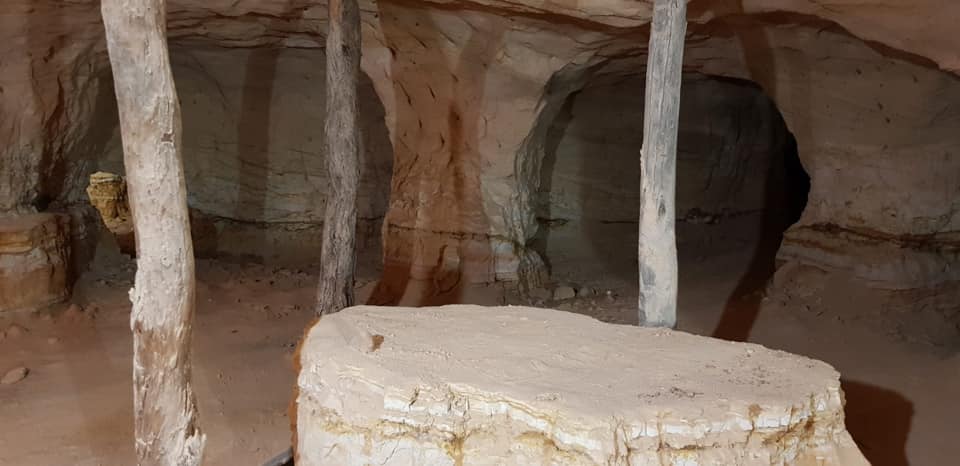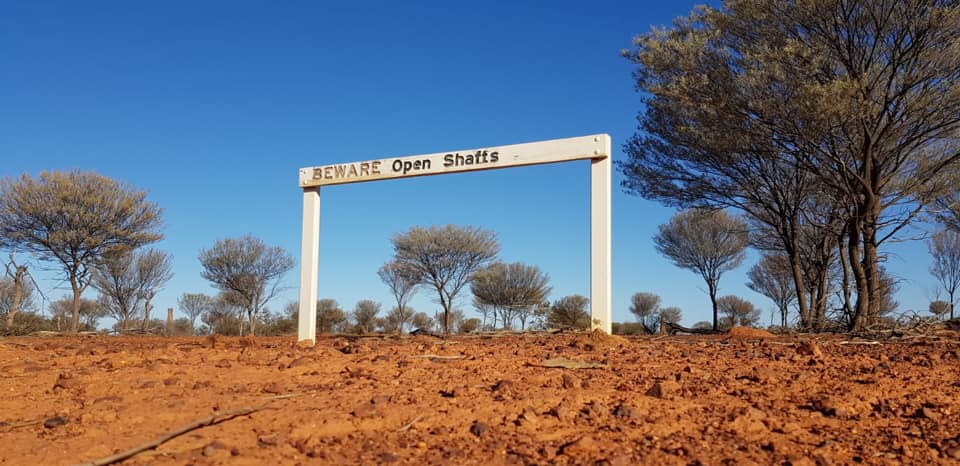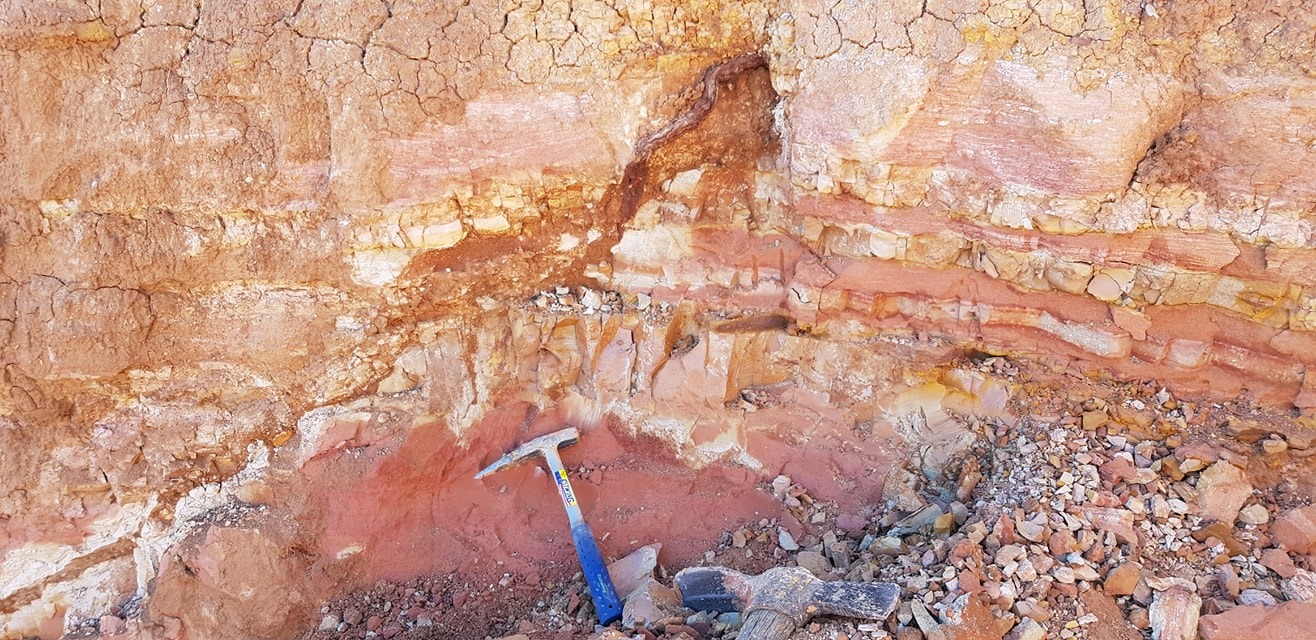Australian Opal Fields
Opal Sites Across Australia
New South Wales Opal Fields

Lightning Ridge
There's a reason why Lightning Ridge, one of the most famous opal fields in Australia, is known as the "Black Opal Capital of the World". Lightning Ridge opals are thought to be one of the rarest and most valuable gemstones in the world. The sheer volume of black opal that has come out of Lightning Ridge is staggering. While millions of dollars worth of Lightning Ridge opals have been mined since the field was founded in 1901, black opals are becoming harder and harder to find, making them all the more incredibly sought after.
The unparalleled, compelling nature of black opals has secured Lightning Ridge's spot as one of the most famous mining sites in the world. Every year tens of thousands of tourists flock to Lightning Ridge to tour the opal fields, while rookie and veteran miners alike return to "The Ridge" in the winter, bringing along hopes of finding the mystifying and elusive black opal with flashes of red.
White Cliffs
The field of White Cliffs, located in western New South Wales, was first discovered in 1889. Four men hunting a kangaroo quite literally stumbled upon a jackpot of brilliant fire opals. The jackpot was taken to Adelaide to be appraised by famed opal expert Tullie Wollaston. The opals were of such incredible quality that Wollaston immediately made the journey out to White Cliffs himself. It wasn't long before a plethora of opal miners followed. This was the birth of the opal industry in New South Wales.
White Cliffs was named for the white sandstone dunes that dotted the desolate landscape. Beneath these mounds were incredible treasures including fossils, opal pineapples, and dinosaur bones. At its peak, in the early 1900s, nearly 5,000 people lived at White Cliffs. Unfortunately, the field's fame and prosperity was short-lived. With the arrival of World War I, the field became abandoned. Few miners survived fighting on the front lines, and those who did went to try their hand at digging in Queensland or South Australia.
In modern times, White Cliffs is once again an active mine. As the only place in the world where the incredible opal pineapples are found, a small population of adventurous miners continue living in the underground caves, hoping that they'll be the next to strike it rich by digging up one of the highly valuable specimens.
South Australian Opal Fields

Andamooka
Andamooka is the second largest of South Australia's opal fields. Opal was first mined here in 1930. The field is known for it's "Painted Ladies" as well as for being the field that produced the 203 carat Andamooka Opal, one of the finest gemstones that the world has ever seen. Like many Australian opal fields, Andamooka had its heyday in the 60s and 70s. Over 3,000 people lived in the town permanently and the quality and amount of opal being mined was neck in neck with the gems that were coming out of Coober Pedy.
In the last decade, the population of Andamooka has fallen to about 500 residents. Uranium mining has overtaken opal mining as the area's most profitable industry. This is due in part to Coober Pedy's meteoric rise in fame as an epicentre of opal mining. Regardless, Andamooka maintains an unparalleled historical value and is still considered to be one of the most formidable Australian opal fields.
Coober Pedy
Since 1915, Coober Pedy has been a powerhouse of the opal mining industry. Nearly almost all of the light opal in the world comes just from this South Australian field. In the mining boom that occurred during the 70s and 80s, hundreds of thousands of dollars worth of opal was being discovered, cut, and dealt by nearly 10,000 permanent inhabitants, With immigrants from over 50 countries, it was one of the most diverse places in all of Australia.
Nowadays, the town's population hovers at around 3,000, but those still mining are producing large quantities of the world's finest white opal. In addition to opal mining, Coober Pedy is famous for its underground homes, hotels, churches, beauty salons, and pubs, To escape the sweltering heat, the subterranean lifestyle was an absolute necessity. Coober Pedy has also been nicknamed the "Hollywood of the Outback" because of it's notoriety as a popular filming location for blockbuster movies. All of this has lead to the town becoming a tourist hotspot, especially for those making the trip of the highway from Adelaide to Alice Springs.
Mintabie
270 kilometres away from Coober Pedy is the rugged and remote opal field of Mintabie. Mintabie had a late arrival to the opal mining boom. It wasn't until 1978 that gem quality black opal was unearthed at the field by Croatian miners visiting from Coober Pedy. Millions of dollars worth of opal was subsequently mined at Mintabie by the early 1980s, drawing in a population of nearly 1,500. The opal found at Mintabie was durable, and was allegedly strong enough to scratch agate.
Because of Native Land Title, opal mining in Mintabie has become severely limited. The town itself was recently torn down, leaven nothing behind but a meagre few former residents and their memories. Many of the remaining Mintabie miners have now defected to Lambina and other nearby South Australian opal fields.
Queensland Opal Fields

Opalton
There’s a reason why Opalton holds a special place in Australia’s opal history—it's one of the few regions in the world where boulder opal is found. Boulder opals are renowned for their vivid colors, often with striking veins of fire embedded in ironstone, creating patterns unlike any other type of opal. Discovered in the late 1800s, Opalton quickly became a productive opal field, with countless miners working the dry, rugged land in search of these brilliant stones. While the peak of large-scale mining has passed, boulder opals from Opalton remain highly prized for their durability and unique character.
Unlike the concentrated opal fields of Lightning Ridge or Coober Pedy, Opalton’s scattered deposits stretch across a vast expanse of outback, creating a slower, more deliberate pace of fossicking. Today, dedicated opal hunters and curious travelers visit during the cooler months, drawn by the chance to find opals still lying beneath the surface. The rough terrain and old hand-dug shafts speak to a time when the area was a hive of activity. Though quieter now, Opalton continues to attract those captivated by the raw beauty and rarity of Australian boulder opal.
Koroit
Koroit, located in southwestern Queensland, is one of the most iconic sources of boulder opal in Australia. What sets Koroit opal apart is its distinct, often intricate patterns—winding veins of electric color laced through dense ironstone. These natural designs can resemble anything from abstract art to ancient symbols, making each piece truly one of a kind. Since the discovery of opal in the area in the late 19th century, Koroit has built a reputation among miners and collectors alike for producing opals with unmatched complexity and visual depth.
Despite its remote location, Koroit remains an active fossicking and mining area. The field doesn’t yield opal easily, and much of it is found through painstaking work in hard ground, but it’s precisely this rarity—and the extraordinary nature of the opals—that draws people back. Whether it’s seasoned miners returning for another season or collectors seeking a statement stone, Koroit continues to fascinate with its surreal, naturally-formed opal patterns locked in stone millions of years old.
Yowah
Tucked deep in the Queensland outback, Yowah is best known for the famous “Yowah Nut”—a type of boulder opal formation unique to the region. These ironstone concretions can contain vibrant opal centers, hidden until cracked open or sliced to reveal their colorful cores. Yowah opal is often more delicate and detailed than other boulder fields, and it’s this quiet brilliance that gives the area its enduring appeal.
Yowah is also one of the few places where visitors can fossick for opals directly in town, making it accessible for hobbyists and first-time seekers. While mining here is mostly small-scale, the sense of community and passion for opal runs deep. Every July, the town hosts the Yowah Opal Festival, celebrating not just the opal itself but the lifestyle it supports—patient, persistent, and driven by a deep respect for the land and its treasures.
Quilpie
Quilpie sits at the gateway to Queensland’s boulder opal country and has long been associated with some of the most stable and high-quality opal in Australia. Known for its rich, solid opal seams encased in ironstone, Quilpie's stones often feature sweeping washes of color—reds, blues, greens—flowing across dark, earthy backdrops. Commercial mining in the area began in the early 1900s and continues today, making Quilpie both a historic and active hub in the opal trade.
The town itself is deeply connected to opal culture, with local galleries, public displays, and even an opal altar in St. Finbarr’s Church showcasing the stone’s significance. While Quilpie might not have the fame of Lightning Ridge or Coober Pedy, it’s a cornerstone of the boulder opal world. For those chasing consistency and quality in their opal, or looking to explore the real heart of Queensland opal country, Quilpie remains a key destination.